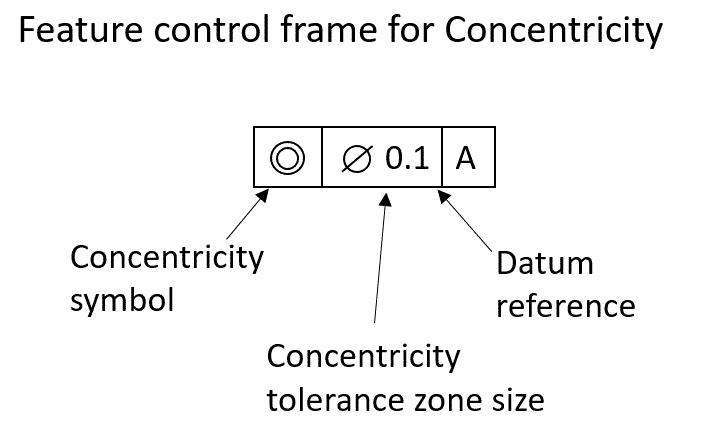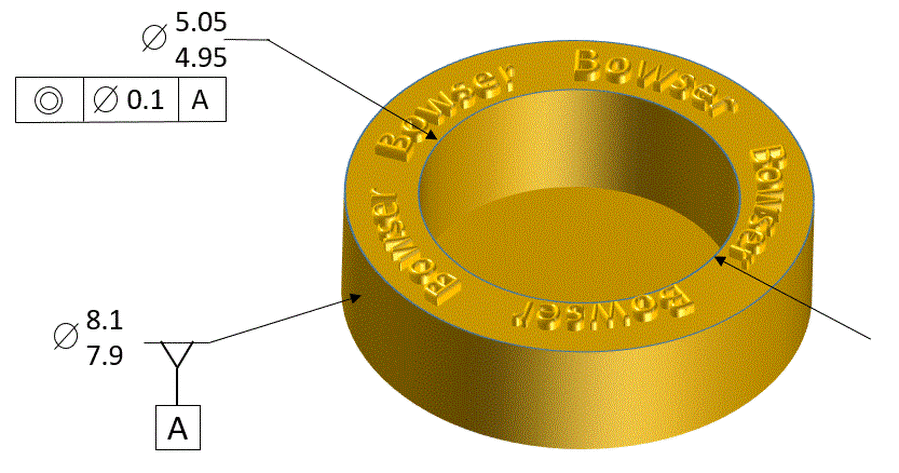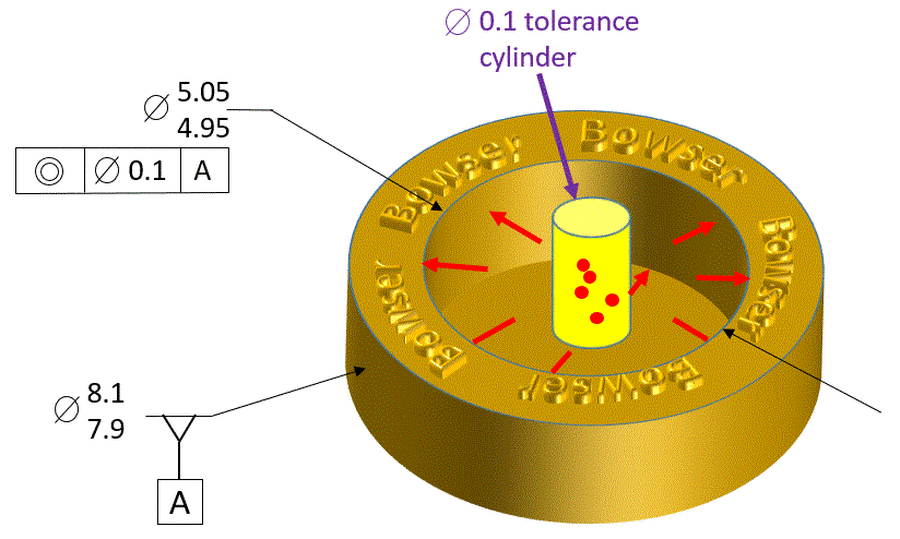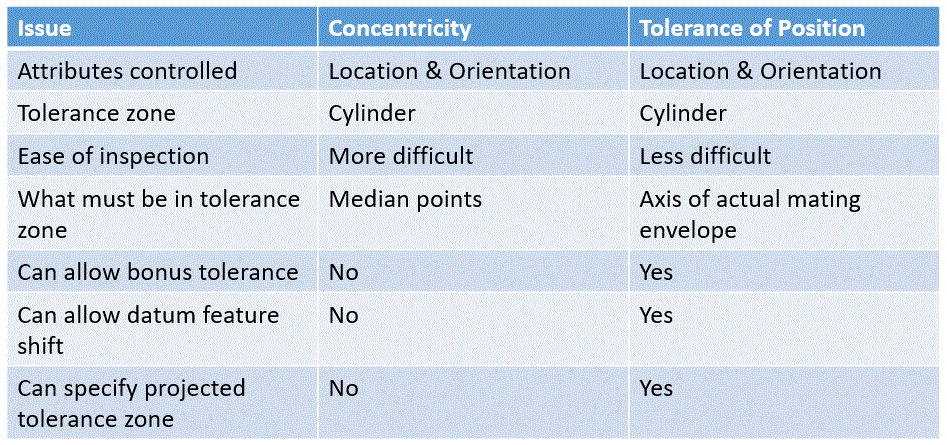Concentricity
The feature control frame for Concentricity is shown below:
In this chapter we will discuss what Concentricity is and why it is better to use Tolerance of Position rather than Concentricity. This is difficult for many people to accept because Concentricity sounds so intuitively correct for centering a round part relative to another round part. But when we really understand what Concentricity does and how it is measured, we will realize that Tolerance of Position is a better choice.
We can see below an application for concentricity. We want to make a gold plated water bowl for our dog with his name embossed on it. We want to make sure that the inside of the bowl is nicely centered relative to the outside of the bowl.
The concentricity tolerance is applied the same way that a tolerance of position would be applied. The outside of the bowl is specified to be datum [A]. The location of the inside of the bowl is controlled relative to datum [A].
We can see below an application for concentricity. We want to make a gold plated water bowl for our dog with his name embossed on it. We want to make sure that the inside of the bowl is nicely centered relative to the outside of the bowl.
The concentricity tolerance is applied the same way that a tolerance of position would be applied. The outside of the bowl is specified to be datum [A]. The location of the inside of the bowl is controlled relative to datum [A].
The best way to understand concentricity is to consider the tolerance zone and discuss what is required to fit within the tolerance zone.
The concentricity control specifies that there is a 0.1 dia tolerance cylinder centered on datum [A]. The inspector must take a number of two point measurements (theoretically an infinite amount of them) as shown below. The requirement is that the median points of all of the two point measurements must fall within the tolerance cylinder.
The concentricity control specifies that there is a 0.1 dia tolerance cylinder centered on datum [A]. The inspector must take a number of two point measurements (theoretically an infinite amount of them) as shown below. The requirement is that the median points of all of the two point measurements must fall within the tolerance cylinder.
The relevant question then is what are the pros and cons of using concentricity vs. tolerance of position. The chart below compares concentricity and tolerance of position.
We see that both control the same attributes.
Both have the same tolerance zone.
Concentricity is more difficult/more expensive to inspect than tolerance of position. This is because in concentricity one must determine whether or not median points fall within a tolerance cylinder. That's more difficult than determining whether or not an axis fits within the tolerance cylinder.
Concentricity does not allow bonus, datum feature shift, or projected tolerance zone. Tolerance of position does allow all of these.
So the question is, why would we choose to use concentricity when we could use tolerance of position?
We see that both control the same attributes.
Both have the same tolerance zone.
Concentricity is more difficult/more expensive to inspect than tolerance of position. This is because in concentricity one must determine whether or not median points fall within a tolerance cylinder. That's more difficult than determining whether or not an axis fits within the tolerance cylinder.
Concentricity does not allow bonus, datum feature shift, or projected tolerance zone. Tolerance of position does allow all of these.
So the question is, why would we choose to use concentricity when we could use tolerance of position?




